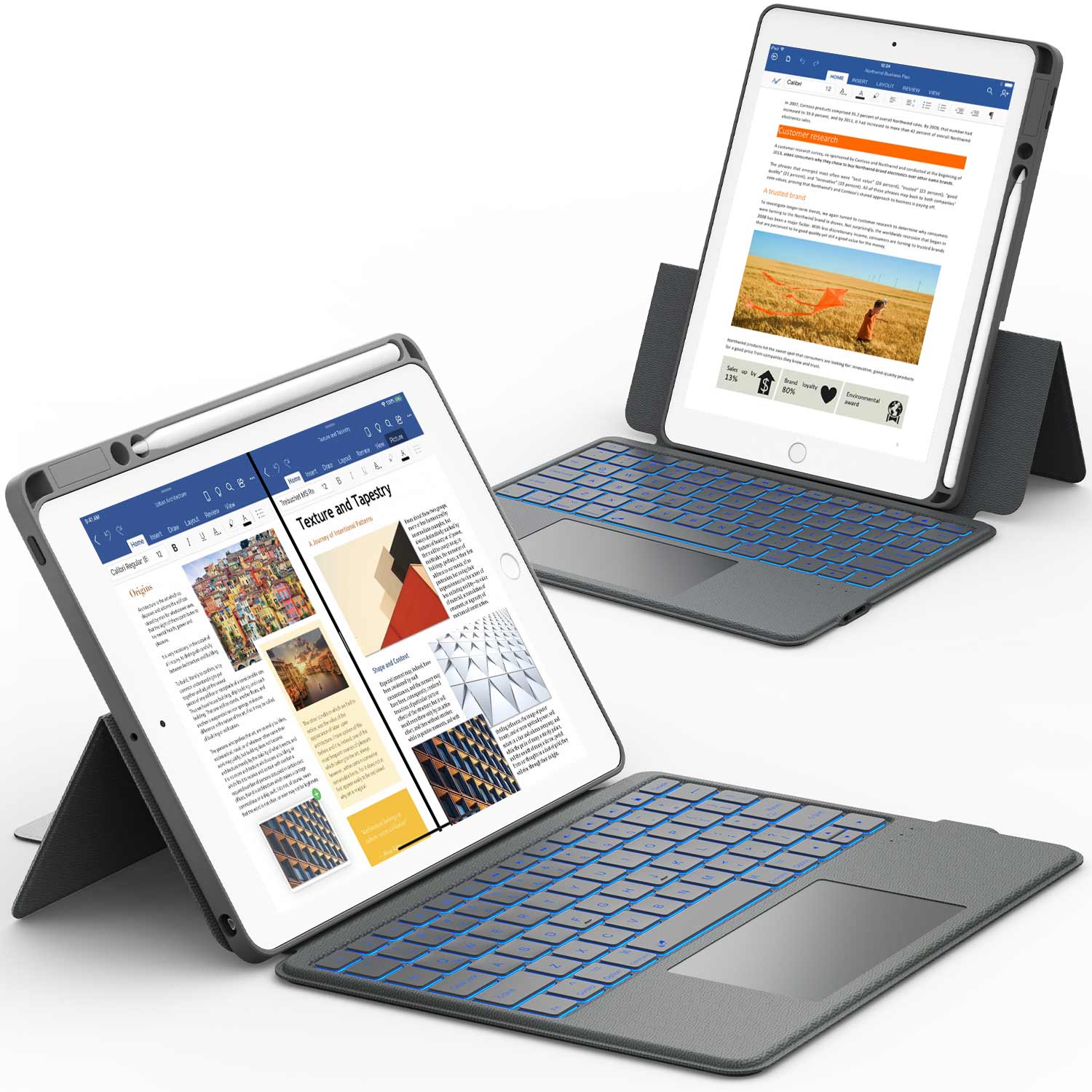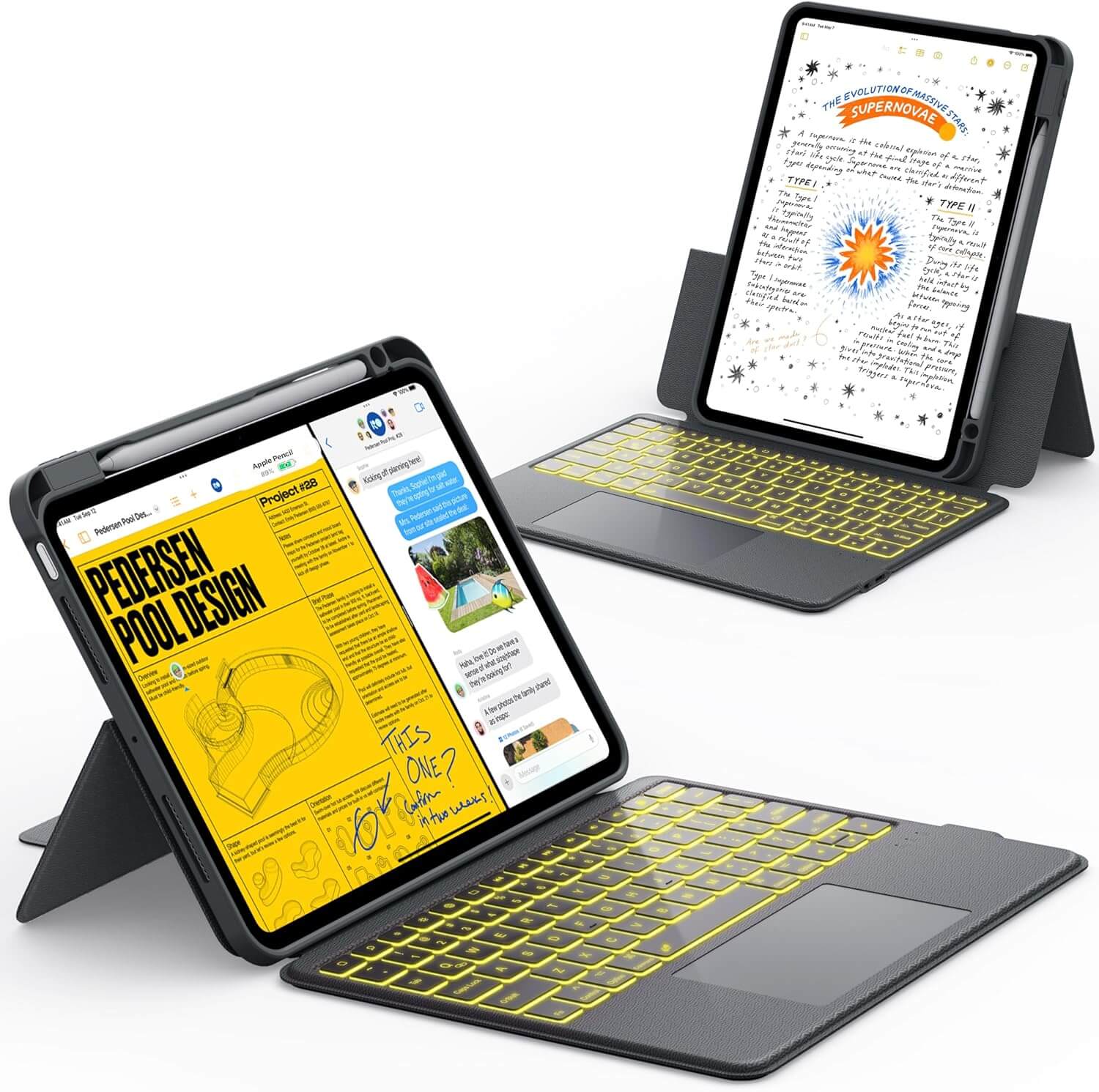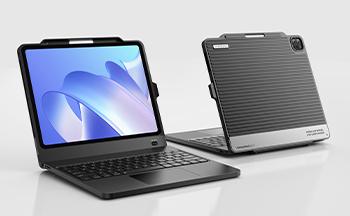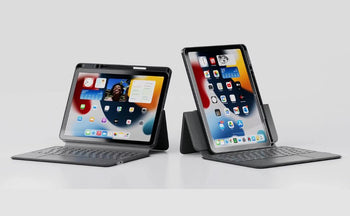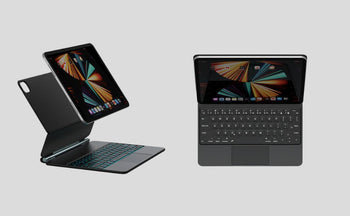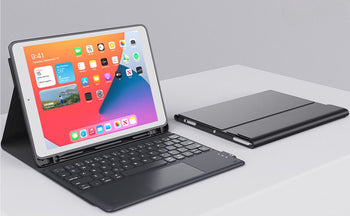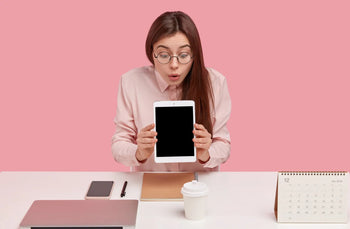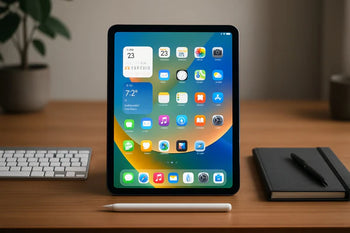Is your iPad battery draining fast? You’re not the only one—many users notice their battery life dropping quicker than expected. It can be frustrating when your iPad can’t make it through the day, even after a full charge.
There are plenty of reasons this happens. Background apps, high screen brightness, and outdated software all play a part. Over time, even normal wear can cause the battery to lose capacity.
In this guide, we’ll break down the most common causes of fast battery drain and share practical tips to help you extend your iPad’s battery life.
Keep your iPad safe while you troubleshoot battery issues. Explore our iPad Protective Cases for durable, everyday protection that helps your device stay in top shape.
Why Your iPad Battery Is Draining Fast

Battery drain usually comes down to how you use your iPad, the state of the software, and the battery’s age. High brightness, background processes, and old batteries all eat away at battery life and leave you charging more often.
Common Everyday Causes
Honestly, it’s the daily stuff that gets you. Using your iPad at max brightness or keeping the screen on for ages burns through power. Streaming, gaming, or juggling a bunch of apps? That’ll drain things even faster.
Apps that refresh in the background or send a ton of notifications keep your iPad busy even when you’re not touching it. If you want to see which apps are the worst offenders, check Settings > Battery and look at Battery Usage by App.
Turning off Background App Refresh, lowering screen brightness, and shortening Auto-Lock time all help. When you’re running low, Low Power Mode can cut back on background stuff and slow things down a bit to save juice.
|
Common Cause |
Power Impact |
Quick Fix |
|
High brightness |
High |
Lower brightness or use Auto-Brightness |
|
Background refresh |
Medium |
Turn off for unused apps |
|
Long screen-on time |
High |
Set Auto-Lock to 1–2 minutes |
Software Glitches or Outdated iPadOS
Sometimes the software’s to blame. Bugs, stuck background tasks, or old system files can keep the processor working overtime. That burns through energy and, over time, actually shrinks your battery’s capacity.
Installing the latest iPadOS update usually helps, since Apple rolls out battery optimizations pretty often. If you get weird battery drain after updating, try restarting the iPad or resetting all settings. Also, take a look at background app activity—some apps just don’t behave. Disabling Location Services or Push Email can help if they’re running too much.
Battery Health and Aging Hardware
All iPad batteries wear out eventually. Lithium-ion batteries go through charge cycles, and after hundreds of those, they just can’t hold as much energy. If battery health drops below about 80%, you’ll probably notice less usage time and faster drops.
On newer iPads, check battery condition under Settings > Battery > Battery Health & Charging. If the max capacity is low, it might be time for a swap.
Heat, constant full discharges, and always charging to 100% will age your battery faster. Try to keep the battery between 20% and 80% when you can, and don’t use it while it’s plugged in if you can help it. Replacing a tired battery can bring your iPad back to life.
Turn your iPad into a more efficient workstation. Check out our Bluetooth Keyboards for iPad to type faster, save power, and boost productivity anywhere.
How to Fix iPad Battery Draining Fast Issues

You can usually stretch your iPad’s battery by tweaking display settings, cutting back on background activity, and keeping the software up to date. These steps help your device run better and last longer between charges.
Adjust Display and Power Settings
The screen is one of the biggest battery hogs. Dropping screen brightness or turning on auto-brightness helps a lot. Dark Mode can also save a bit, especially on OLED screens (if your iPad has one).
Set auto-lock to something short, like two minutes or less. That way, the screen isn’t staying on for no reason. You’ll find it under Settings → Display & Brightness → Auto-Lock.
Need to save power fast? Switch on Low Power Mode or even Airplane Mode if you don’t need Wi-Fi or Bluetooth for a bit. Both cut down on background activity and help your battery last.
Manage Background Apps and Notifications
Background apps are sneaky battery drainers. Head to Settings → General → Background App Refresh and turn it off for apps you don’t care about—or just kill it completely.
Check Settings → Battery to see which apps suck up the most power. Social and messaging apps are usually near the top since they’re always checking for updates and notifications.
Limit Location Services to apps that really need it. Go to Settings → Privacy → Location Services and pick While Using the App instead of Always. You can also cut down on motion effects under Accessibility → Motion to save a few more percentage points.
Update or Reset iPadOS When Needed
If you’re running outdated software, bugs or inefficient processes might be draining your battery. Check Settings → General → Software Update and install the latest iPadOS. Updates usually bring performance and battery tweaks.
If things are still bad, back up your stuff and try a factory reset—Settings → General → Transfer or Reset iPad → Erase All Content and Settings. Sometimes you’ve just got a glitchy app or setting that needs to go.
If nothing works, your battery’s probably just old. Time to contact Apple Support or a repair shop for a new one.
Tips to Extend iPad Battery Life
Making your iPad battery last longer isn’t rocket science. A few changes to how you use it and a little maintenance go a long way. You’ll avoid quick drain and might not need a battery replacement for years.
Use Low Power Mode and Optimize Charging
Low Power Mode cuts background activity and some visual effects to save energy. You can turn it on in Settings > Battery when you’re running low or just leave it on for longer stretches. It limits things like email fetch, app refresh, and auto downloads, which all helps slow the drain.
Don’t leave your iPad plugged in after it hits 100%. Overcharging, especially over time, can wear the battery out faster. Keeping it between 20% and 80% is best for battery health.
If you’re a daily user, turn on Optimized Battery Charging. It learns your routine and holds the charge at 80% until you need to use your iPad again. That helps slow down battery aging.
If your iPad still won’t hold a charge even after all this, you’re probably due for an iPad battery replacement from Apple or an authorized shop.
Keep Apps Updated and Limit Heavy Usage
Old apps can drain your battery faster because of bugs or bad optimization. Check the App Store for updates and keep your apps current.
In Settings → Battery, see which apps use the most energy. If something’s hogging power, close it when you’re not using it, or adjust its settings.
Streaming, gaming, and running a bunch of apps at once will chew through battery. Try to limit those when you’re away from a charger. Lowering brightness or shortening Auto-Lock time helps too.
Tip: Turn off Background App Refresh for apps you barely use. No point letting them eat up power when you’re not even using them.
Store and Maintain Your iPad Properly
Temperature matters for battery health. Keep your iPad between 32°F and 95°F (0°C to 35°C) and don’t leave it in hot cars or direct sun. Heat can permanently damage the battery.
If you’re putting your iPad away for a while, charge it to about 50% and power it off. Storing it fully charged or totally dead can hurt long-term battery life.
Clean the charging port and cable ends now and then to keep a solid connection. Stick with certified accessories to avoid weird charging issues that can shorten battery life.
If you notice swelling, overheating, or really fast drain even after all this, book a battery replacement with Apple or a reputable tech.
Upgrade your setup with more flexibility. Discover our iPad Cases with HDMI to connect your iPad to larger screens for work, streaming, or presentations.
Conclusion: iPad Battery Draining Fast
Keeping your iPad battery healthy doesn’t have to be complicated. With a few small changes—like lowering brightness, managing background apps, and keeping iPadOS updated—you can make your battery last much longer.
Regular maintenance and smart charging habits go a long way toward keeping your device running smoothly every day.
If you want to take your iPad performance even further, check out our quick guide on how to end apps on iPad for more simple ways to save power and boost efficiency.
Frequently Asked Questions
Battery drain happens for a bunch of reasons—old hardware, background software, or just how you use your iPad. You can usually fix or at least improve it by changing settings, checking battery health, and charging smart.
Why is my iPad battery draining so quickly?
High brightness, background apps, and active Bluetooth or location services can drain power fast. Push notifications and Background App Refresh also use extra energy. Lower your screen brightness, turn off unused features, and enable Low Power Mode to extend battery life.
How do I know if my iPad battery is bad?
Check battery health under *Settings → Battery*. If the percentage drops quickly or your iPad shuts down unexpectedly, the battery may be worn out. Contact Apple Support for a diagnostic if you suspect a hardware issue.
How many years does an iPad battery last?
Most iPad batteries last around three to five years, depending on usage. Frequent full discharges and heat shorten lifespan. Moderate use and careful charging habits help it last longer.
How do I extend my iPad’s battery life?
Keep your charge between 20% and 80% when possible. Avoid leaving it plugged in after reaching 100%. Dim the screen, limit Bluetooth, and use Low Power Mode to save energy.

